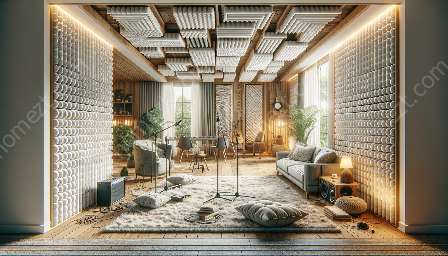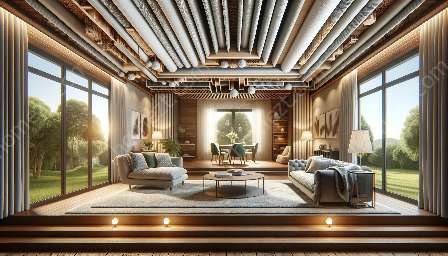Living in a noisy environment can be disruptive and uncomfortable, but there are effective techniques for soundproofing walls and ceilings to create a more peaceful living space. In this comprehensive guide, we will explore professional soundproofing methods and materials, as well as strategies for noise control in homes.
Understanding Soundproofing
Before delving into specific techniques, it is important to understand the basics of soundproofing. Soundproofing is the process of reducing or eliminating the transmission of sound from one area to another. It involves creating barriers or using materials that absorb, block, or dampen sound waves, thereby minimizing the impact of noise.
Soundproofing Walls
One of the most common areas for soundproofing in homes is the walls. Whether you live in a noisy urban environment or have noisy neighbors, soundproofing walls can significantly reduce the transmission of unwanted noise. There are several techniques for soundproofing walls:
- Adding Mass: Increasing the mass of walls can help block sound. This can be achieved by using dense materials such as mass-loaded vinyl or soundproof drywall.
- Decoupling: Decoupling involves creating an air gap between surfaces to prevent sound from traveling through structural connections. Techniques such as resilient channel systems or sound isolation clips can help achieve decoupling.
- Sound Absorption: Applying sound-absorbing materials, such as acoustic panels or foam, to the walls can help reduce reverberation and echo, thereby enhancing soundproofing.
- Sealing Air Gaps: Ensuring that there are no air leaks or gaps in the walls is crucial for effective soundproofing. Sealing gaps with acoustic caulk or weatherstripping can prevent sound from leaking in or out.
Soundproofing Ceilings
In addition to walls, ceilings also play a significant role in sound transmission. Soundproofing ceilings can be particularly important in multi-story buildings or homes with high levels of airborne noise. Some effective techniques for soundproofing ceilings include:
- Mass-Loaded Vinyl: Installing a layer of mass-loaded vinyl above the existing ceiling can add mass and reduce the transmission of airborne noise.
- Acoustic Insulation: Using acoustic insulation materials, such as fiberglass or mineral wool, in the ceiling can help absorb sound and improve the overall soundproofing performance.
- Resilient Channels: Installing resilient channels between the ceiling and the structural framework can help decouple the ceiling from the structure, reducing the transmission of impact noise.
- Soundproofing Panels: Hanging soundproofing panels or acoustic tiles from the ceiling can enhance sound absorption and reduce reflected sound.
Noise Control in Homes
While soundproofing walls and ceilings can address structural sound transmission, it is also important to consider other sources of noise within the home. Implementing noise control strategies can further improve the overall living environment:
- Strategic Furniture Placement: Arranging furniture and decor strategically can help absorb and scatter sound waves, reducing echo and improving acoustics within a space.
- Thick Curtains or Drapes: Using heavy, tightly woven curtains or drapes can help block external noise and improve sound insulation in rooms.
- Door Seals and Weatherstripping: Ensuring that doors are properly sealed with weatherstripping can prevent sound from traveling through gaps and improve overall soundproofing.
- White Noise Machines: Incorporating white noise machines or sound masking devices can help mitigate the impact of external noise by creating a constant, soothing background sound.
- Sound-Reducing Flooring: Using sound-absorbing underlayment or carpeting can help minimize impact noise from footsteps and other activities on upper floors.
Conclusion
Professional soundproofing techniques for walls and ceilings, coupled with strategic noise control measures, can significantly enhance the tranquility of a home environment. By understanding the principles of soundproofing and implementing effective strategies, homeowners can create a quieter and more comfortable living space.






